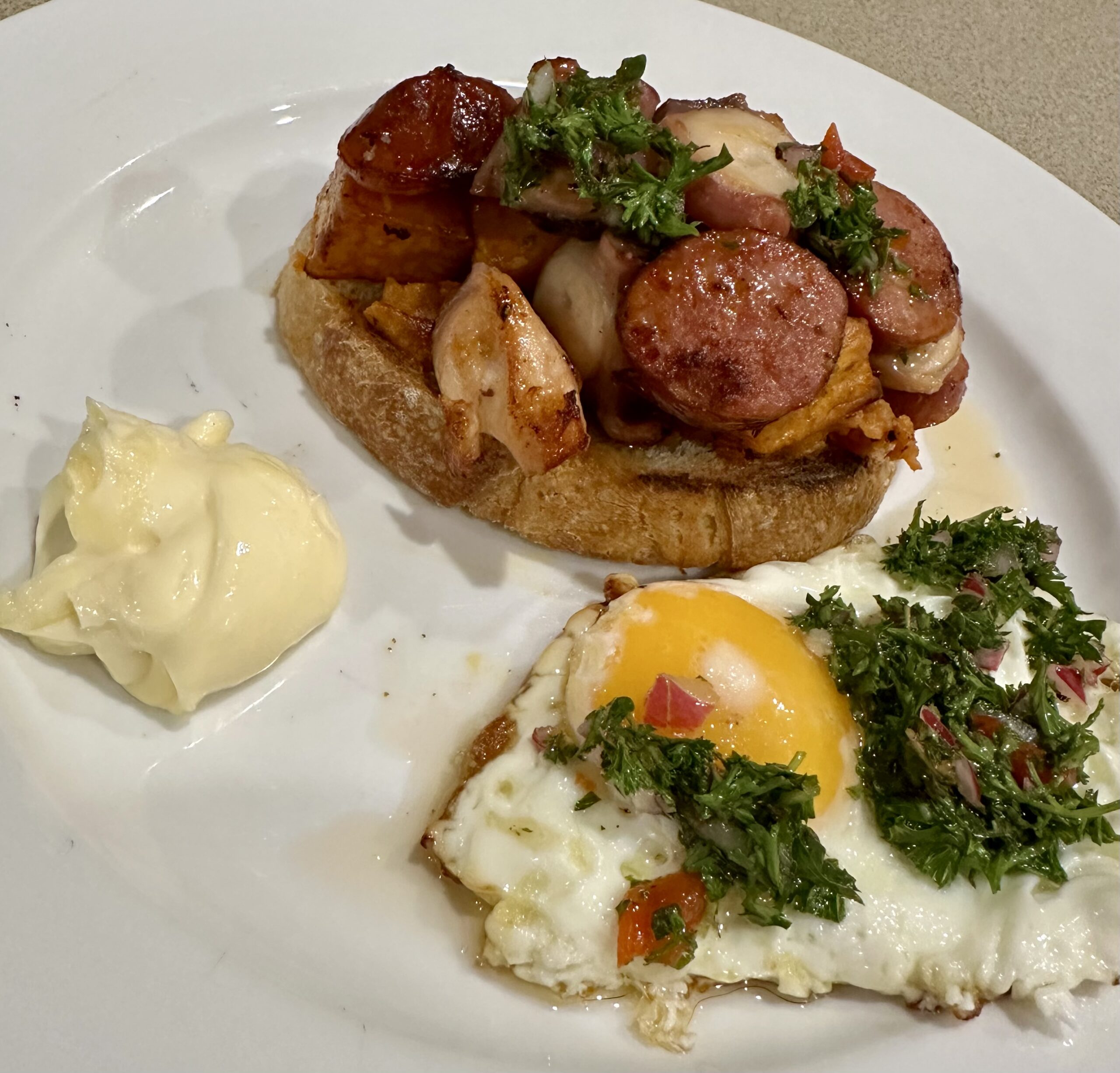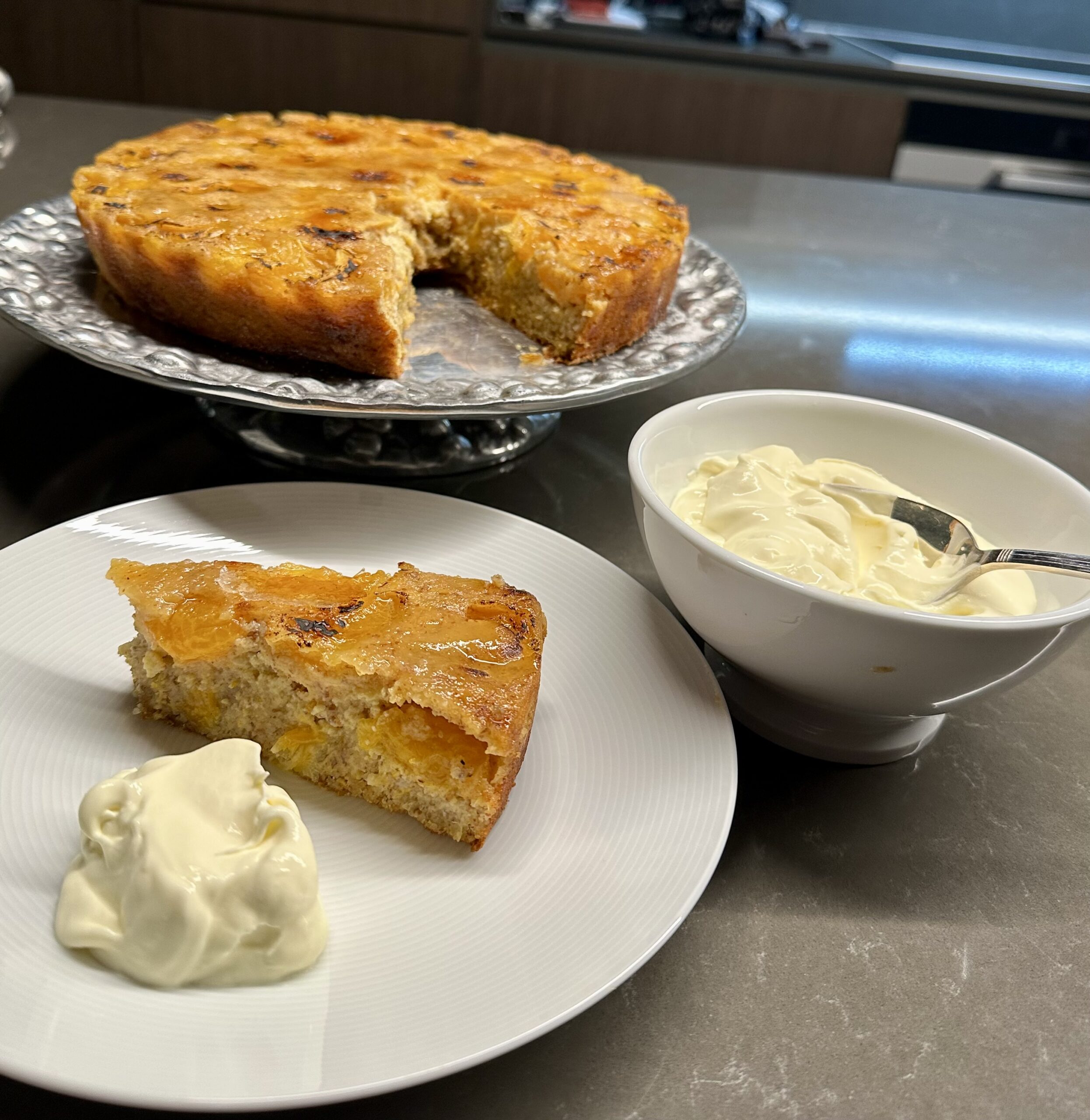I have quite a collection of individual dishes and found these oval ones in a secondhand shop. They are ideal for freezing individual servings of lasagne, chicken parmigiano or baked beef and onions, a dish I often make the day after we have roast beef, to use up the leftover meat and gravy.
The photo looks a bit oily and I suppose it is a bit of a high cholesterol dish – but it’s low in carbs and really delicious! Any leftovers make a great filling for a toasted sandwich.
Baked Beef and Onions
About 400g leftover roast beef, thinly sliced
2 onions, thinly sliced
1 Tbs butter
1 Tbs olive oil
½ to one cup leftover gravy (see below)
½ cup grated cheddar cheese (or a mixture of leftover bits!)
Arrange sliced beef in a shallow ovenproof dish or 4 individual dishes, lightly greased. In a frying pan heat butter and oil and saute onions over gentle heat until rich golden and quite tender. Add gravy then spread over the beef. Cover with grated cheese. Can be made ahead to this stage and kept covered, in the fridge, for a day or so. Or you can freeze them. Bake 20-25 mins at 200°C or until golden. Serve with a green vegetable or salad.
Serves 4
Note: if you don’t have quite enough gravy add a dash of cream and a dash of tomato ketchup, but avoid adding water as the result will be watery.
Nana’s gravy: remove the roast (chicken, beef, lamb, pork or whatever) from the roasting pan and keep warm, covered loosely with foil. Discard all but 2-3 Tbs of fat from the roasting pan, keeping all the brown bits. Place pan over gas flame, add 2-3 Tbs plain flour and cook, stirring with a wooden spatula, for 2-3 mins or until flour is cooked. Gradually add 2 cups water, 2 Tbs dry sherry, 2 Tbs cream (Nana used the top of the milk), and a good pinch sugar. Taste the gravy adding salt and pepper to taste. If the gravy lacks a bit of flavour or looks a bit pale you can add a stock cube. The good old Oxo was used a lot in England back then to add colour and flavour to beef gravies and casseroles. Normally the gravy will taste fine without, but sometimes with a particularly lean piece of roast beef and insufficient pan juices I have been known to cheat a bit. Sometimes half a beef Oxo cube is just what’s required to give a bit of colour. Let gravy simmer while you carve the meat, adding a bit more water as necessary to keep it the right consistency. Push it through a sieve if you want it to be perfect gravy without any bits. For family I usually don’t bother.


 1 sweet potato (see variations)
1 sweet potato (see variations)





 Tortilla French Toasts:
Tortilla French Toasts: